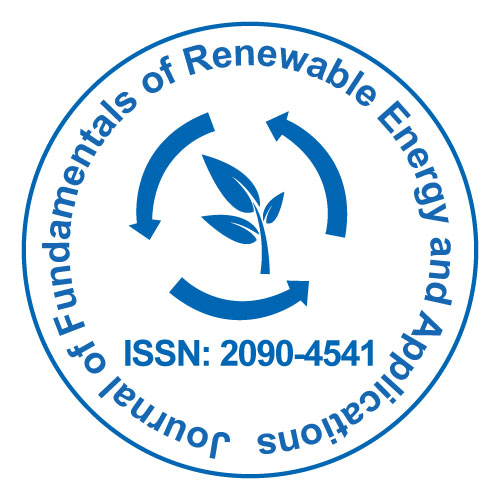
Journal of Fundamentals of Renewable Energy and Applications
Open Access
ISSN: 2090-4541
+44 1300 500008

ISSN: 2090-4541
+44 1300 500008
Opinion Article - (2024)Volume 14, Issue 4
One renewable energy source that is gaining popularity as a possible answer to the world's expanding need for sustainable, clean power is tidal energy, which is produced by the natural rise and fall of ocean tides. Although tidal energy is not as wellknown as solar, wind, or hydropower, it has a number of special benefits, most notably the capacity to supply a steady and reliable energy source. The ability of tidal energy to capture the oceans' enormous power holds promise and might be a major factor in the world's transition to low-carbon energy systems. However, there are still a lot of obstacles in the way of its general acceptance, even with its enormous potential. The dependability of tidal electricity is among its most alluring features. Tidal energy is steady and predictable, in contrast to wind and solar power, which are sporadic and weather-dependent. The sun's and moon's gravitational pull controls tides, resulting in predictable, cyclical patterns of high and low tides. Because of its dependability, tidal energy is a desirable choice for base-load power, or constant, uninterrupted electricity output. In areas where tidal movements are significant, tidal power may be used in conjunction with other renewable energy sources, such as solar and wind, to assist balance the unpredictability of these sporadic sources.
The environmental impact of tidal energy is another important benefit. In addition to having a lesser environmental impact than other renewable energy sources like large-scale hydropower, tidal power systems usually have significantly fewer emissions as compared to fossil fuel-based power generation. For instance, tidal turbines are perfect for places with little or developed land because they function underwater and do not occupy ground. Furthermore, their low visual impact makes them more palatable in some areas where aesthetic considerations would prevent the construction of additional renewable energy infrastructure. Additionally, tidal energy may help with energy access problems, especially for island and coastal communities. Tidal energy systems have the potential to be a reliable, localized power source in areas that are disconnected from national networks or have energy dependability issues. Tidal energy might be a more sustainable and clean option for these communities, who frequently depend on costly and dirty diesel generators. Tidal energy might be a practical choice for isolated locations as installation costs come down and technology improves, assisting in energy diversification and lowering reliance on fossil fuels. However, a number of obstacles must be overcome before tidal energy can be widely used, tempering its potential. The high expense of creating tidal energy systems is one of the main challenges. Compared to other renewable energy sources like wind and solar, the technology is still in its infancy, and the equipment needed to generate tidal energy-such as transmission cables, underwater turbines, and supporting infrastructure-is expensive. Tidal power facilities have high initial installation costs and frequently need significant funding and investment. Once the systems are in place, operational and maintenance expenses are comparatively inexpensive, but the initial expenditure is still a major obstacle.
The effect that tidal energy installations have on marine habitats is another difficulty. Although tidal turbines are thought to be less damaging to the environment than other forms of energy generation, there are worries about how they can affect marine life. Underwater turbine development may have an impact on fish and other marine life, change water flow patterns, and disturb local ecosystems. According to several research, marine creatures that depend on echolocation may be harmed by the noise produced by tidal turbines. Furthermore, aquatic life may be at risk from the movement of turbines through the water. To reduce these effects and guarantee the sustainability of tidal energy development, careful planning, environmental assessments, and mitigation techniques are essential.
Citation: Tan Q (2024). The Challenges of Tidal Energy in the Renewable Energy Landscape. J Fundam Renewable Energy Appl. 14:361.
Received: 29-Nov-2024, Manuscript No. JFRA-24-36230; Editor assigned: 02-Dec-2024, Pre QC No. JFRA-24-36230 (PQ); Reviewed: 16-Dec-2024, QC No. JFRA-24-36230; Revised: 23-Dec-2024, Manuscript No. JFRA-24-36230 (R); Published: 30-Dec-2024 , DOI: 10.35248/2090-4541.24.14.361
Copyright: © 2024 Tan Q. This is an open-access article distributed under the terms of the Creative Commons Attribution License, which permits unrestricted use, distribution and reproduction in any medium, provided the original author and source are credited.